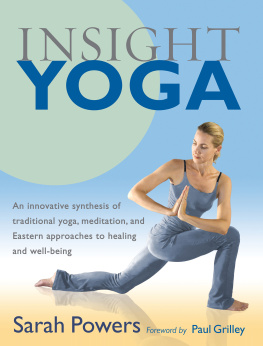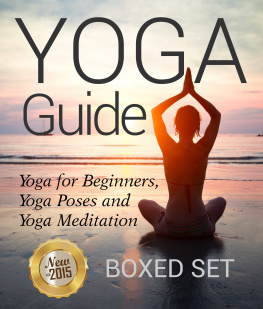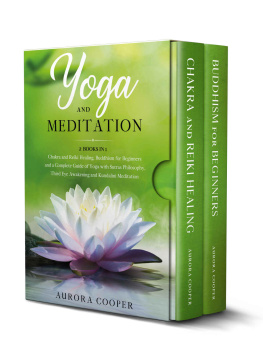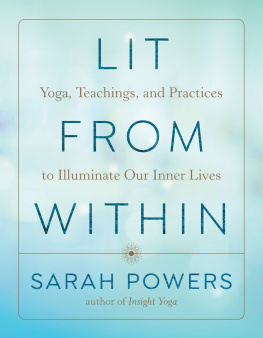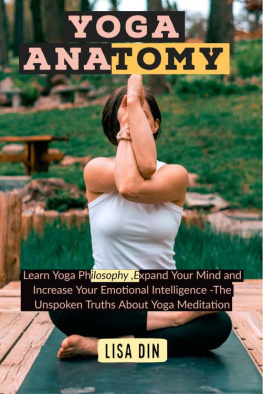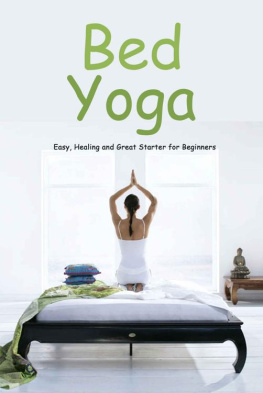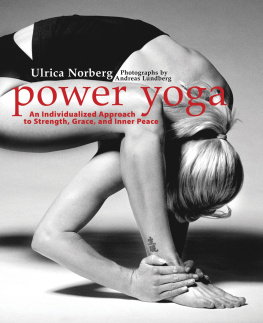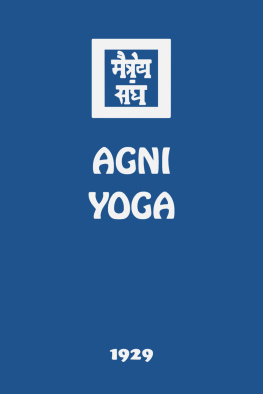Sarah Powers - Insight yoga: An Innovative Synthesis of Traditional Yoga, Meditation, and Eastern Approaches to Healing and Well-Being
Here you can read online Sarah Powers - Insight yoga: An Innovative Synthesis of Traditional Yoga, Meditation, and Eastern Approaches to Healing and Well-Being full text of the book (entire story) in english for free. Download pdf and epub, get meaning, cover and reviews about this ebook. year: 2020, publisher: Shambhala, genre: Religion. Description of the work, (preface) as well as reviews are available. Best literature library LitArk.com created for fans of good reading and offers a wide selection of genres:
Romance novel
Science fiction
Adventure
Detective
Science
History
Home and family
Prose
Art
Politics
Computer
Non-fiction
Religion
Business
Children
Humor
Choose a favorite category and find really read worthwhile books. Enjoy immersion in the world of imagination, feel the emotions of the characters or learn something new for yourself, make an fascinating discovery.
- Book:Insight yoga: An Innovative Synthesis of Traditional Yoga, Meditation, and Eastern Approaches to Healing and Well-Being
- Author:
- Publisher:Shambhala
- Genre:
- Year:2020
- Rating:3 / 5
- Favourites:Add to favourites
- Your mark:
- 60
- 1
- 2
- 3
- 4
- 5
Insight yoga: An Innovative Synthesis of Traditional Yoga, Meditation, and Eastern Approaches to Healing and Well-Being: summary, description and annotation
We offer to read an annotation, description, summary or preface (depends on what the author of the book "Insight yoga: An Innovative Synthesis of Traditional Yoga, Meditation, and Eastern Approaches to Healing and Well-Being" wrote himself). If you haven't found the necessary information about the book — write in the comments, we will try to find it.
Sarah Powers: author's other books
Who wrote Insight yoga: An Innovative Synthesis of Traditional Yoga, Meditation, and Eastern Approaches to Healing and Well-Being? Find out the surname, the name of the author of the book and a list of all author's works by series.
Insight yoga: An Innovative Synthesis of Traditional Yoga, Meditation, and Eastern Approaches to Healing and Well-Being — read online for free the complete book (whole text) full work
Below is the text of the book, divided by pages. System saving the place of the last page read, allows you to conveniently read the book "Insight yoga: An Innovative Synthesis of Traditional Yoga, Meditation, and Eastern Approaches to Healing and Well-Being" online for free, without having to search again every time where you left off. Put a bookmark, and you can go to the page where you finished reading at any time.
Font size:
Interval:
Bookmark:
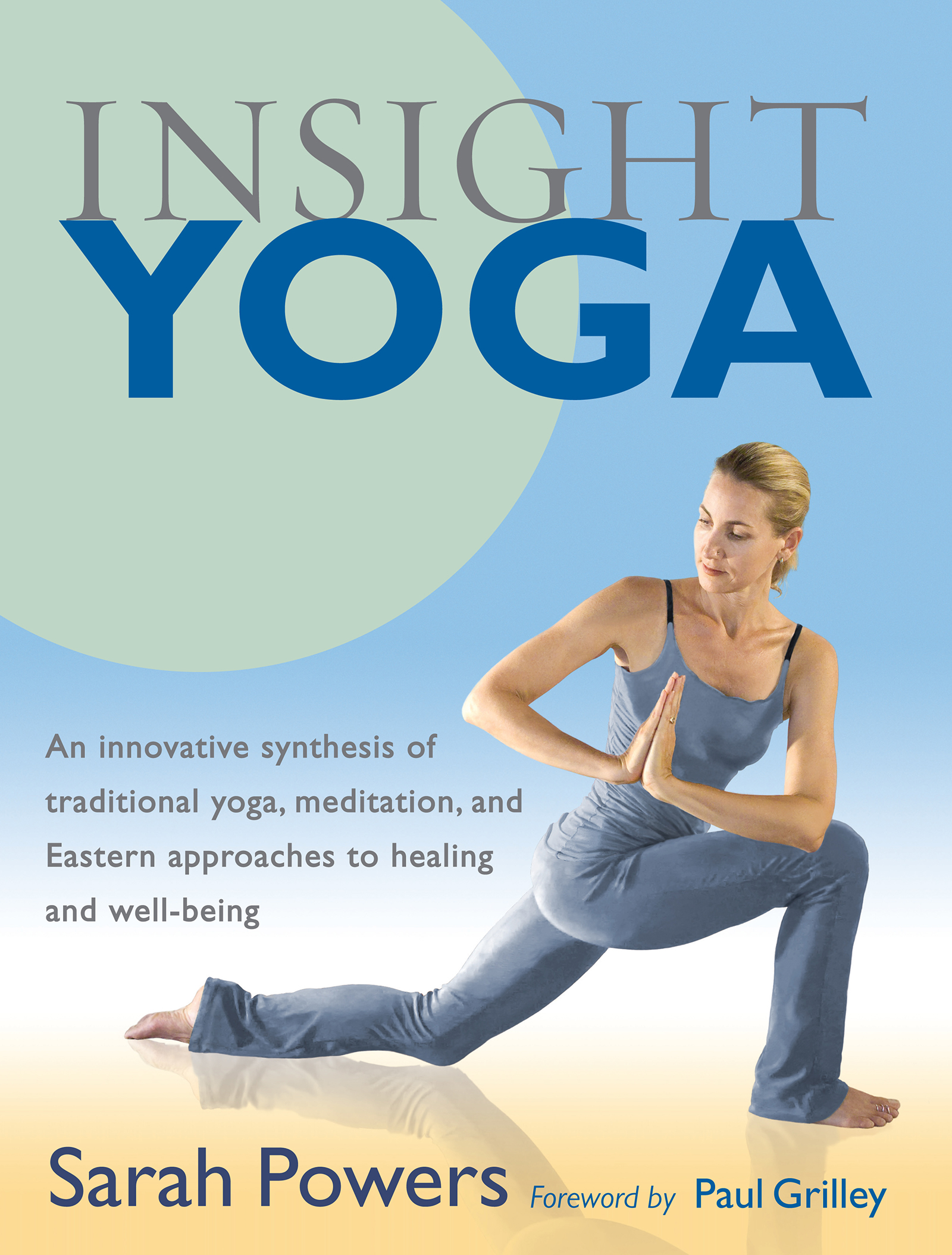
For my mother, whose creative and impassioned writing style taught me about the beauty of words.
And to my eldest brother Conrad, who introduced me to yoga.
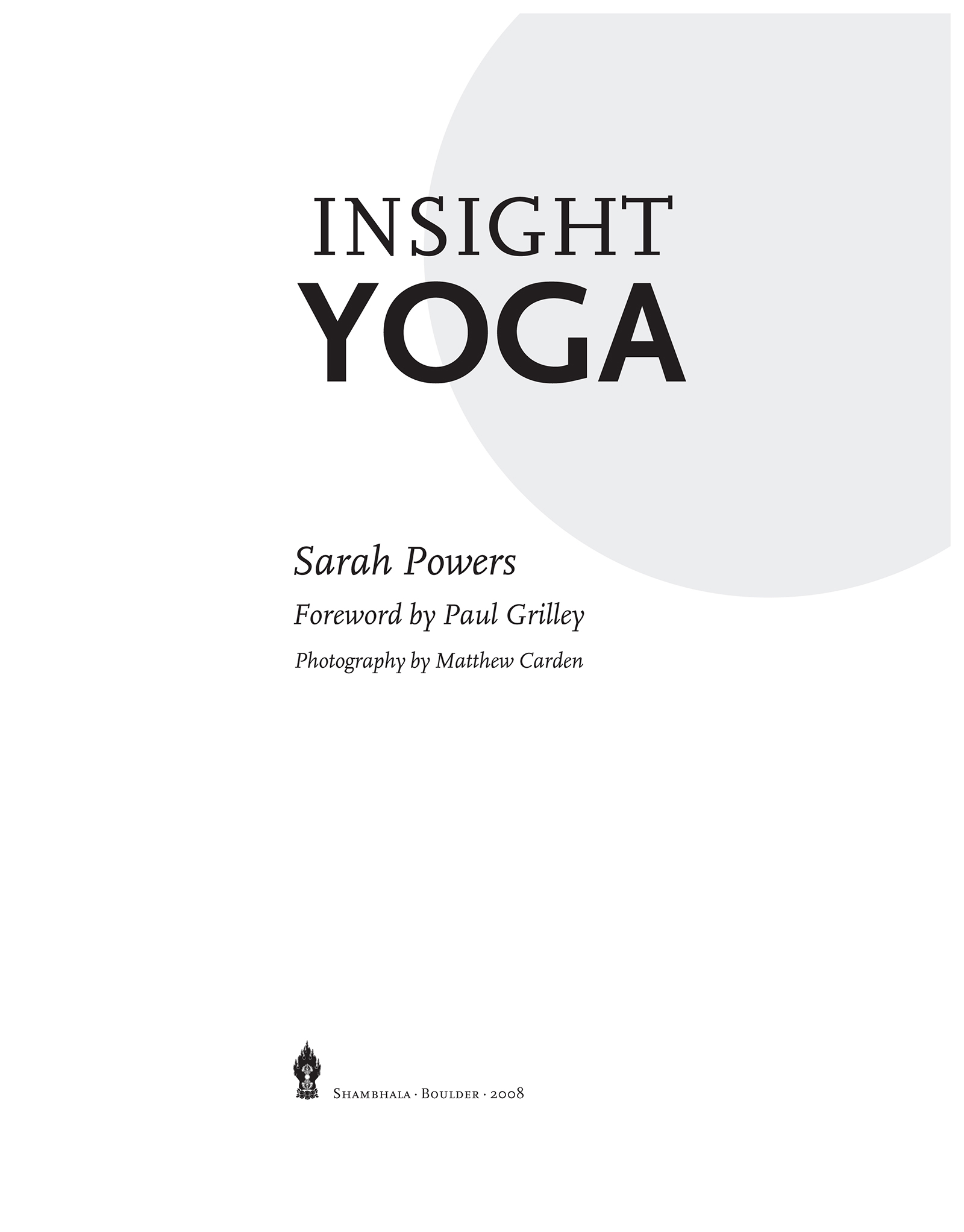
Shambhala Publications, Inc.
4720 Walnut Street
Boulder, Colorado 80301
www.shambhala.com
2008 by Sarah Powers
Drawings showing nadis and chakras Kathi Tesarz
All rights reserved. No part of this book may be reproduced in any form or by any means, electronic or mechanical, including photocopying, recording, or by any information storage and retrieval system, without permission in writing from the publisher.
Library of Congress Cataloging-in-Publication Data
Powers, Sarah.
Insight yoga / Sarah Powers; foreword by Paul Grilley; photography by Matthew Carden.1st ed.
p. cm.
Includes bibliographical references and index.
ISBN 978-1-59030-598-0 (pbk.: alk. paper)
eISBN 9780834822429
1. Yoga. I. Title.
RA781.7.P69 2008
613.7046dc22
2008017296
a_prh_5.5.0_c0_r1
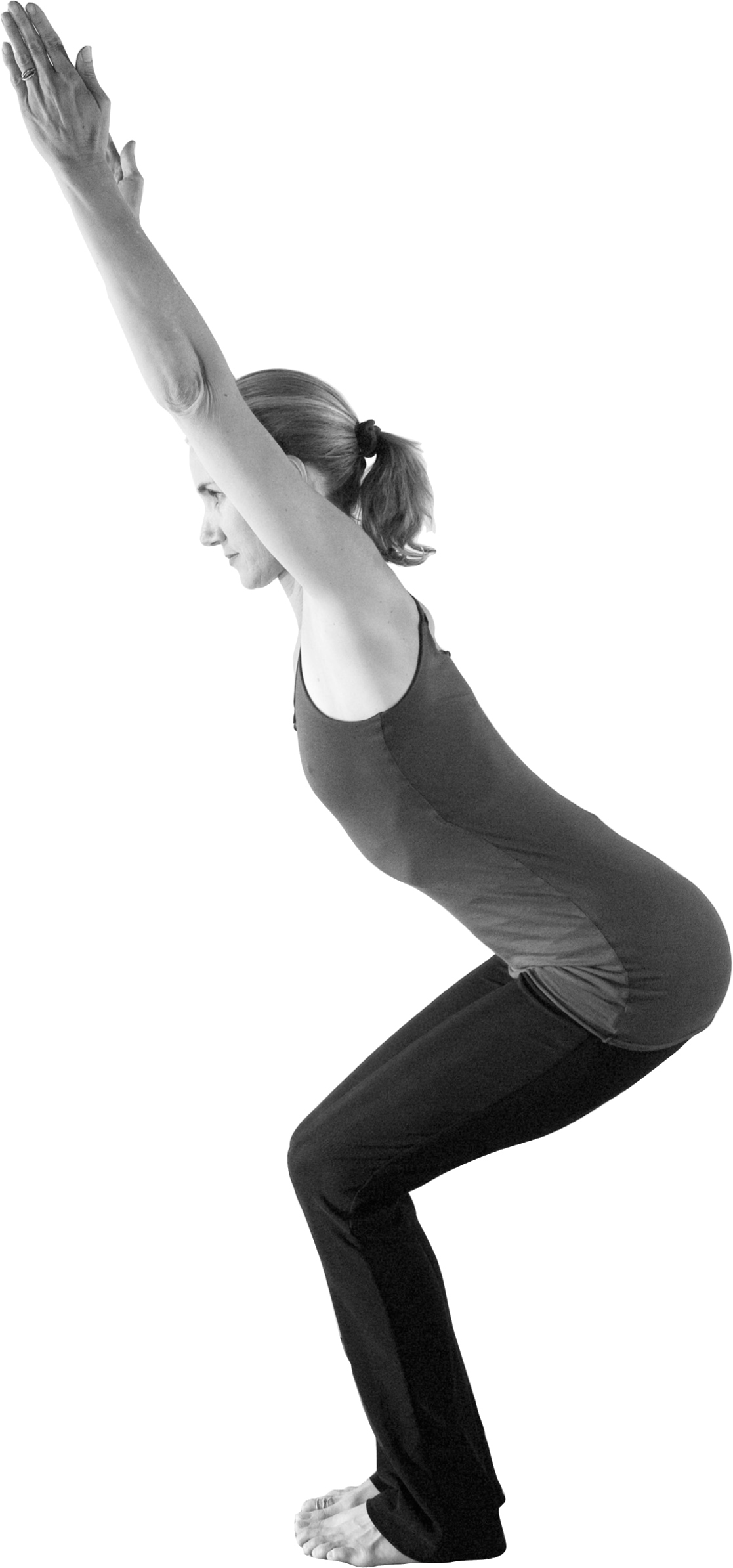

Y OGA CAN BE UNDERSTOOD as a set of behaviors that develops a holistic experience of the body, heart, and mind. It is a process of fully inhabiting ourselves and our life in a radically engaging and inquisitive way. Through this training we develop a healthy capacity to literally take up residence in our bodies and minds, which can then lead us into simple presence. Presence is a quality of being that is open and aware. This body-mind presence serves as the ground for compassion and wisdom to emerge within us.
Although there are many branches of yoga, the philosophy can be defined as a joining or yoking (the translation of yoga) of the many seemingly opposing layers of our beingmind and body, inner with outer, activity with receptivity, subject with objectthe result of which is a nondual or inclusive state of mind in which we are able to experience the challenging dualities of life without falling into dualism. Dualism is a state of mind in which we sever a piece of experience from the integral whole and subsequently see it as independent and separate.
The fruition of a committed yoga practice is the capacity to deeply relax the inner struggle with lifes paradoxes. Someone who is steeped in yoga is better able to tolerate the extremes of heat or cold, agility or immobility, sadness or joy, free from psychological confusion, resistance, or struggle. A yoga practitioner learns to question the assumption that we are separate from what we experience and must therefore strive to accumulate and hold on to that which is pleasant and comforting, while seeking to avoid and rid ourselves of that which is unpleasant, difficult, or threatening.
The path of yoga, although diverse, is a set of practices that moves us out of comfort zones in our bodies and minds, engendering the possibility of broadening our capacity for connection and inclusion. This process becomes possible by learning to dwell inside our bodies and minds with kind yet keen observance coupled with intimate participation. We learn to be fully engaged in feeling our bodies and mental states in various poses and contemplations, as well as to observe how we are responding to our moment-to-moment experience as it unfolds. A yoga practice is therefore an in-depth training in participatory observation and enhancement of the body, heart, and mind.
In body-centered yoga practices, we move our body into poses (asanas) that shape our bones and tissues into certain patterns. This helps properly move the inner animating force or energy body, aiding our natural vitality. The idea in yoga is that there is a whole universe of experience occurring in the unseen realm of existence, which is constantly influencing us. Because we cannot reach out and literally touch this aspect of life, we are often unaware of its existence, or our saturation in it. This energetic dimension, often called prana by the Indians or chi by the Chinese, animates all life.
The reason it is essential to learn about and direct this vital energy within us is because its quality and mobility through our bodies immediately impacts how we feel physically, emotionally, and mentally. Therefore, strengthening the energy body and enhancing its mobility enhances not only our health, but also our potential for deeper states of mind. For this to occur, we need to carve out regular times to practice yoga and meditation. In addition to going to classes, developing a home practice teaches us how to maintain our own interest in self-discovery. This private time spent going inward begins to ignite an attitude of inner investigation throughout our day. We start to see that yoga can be an inward journey of body-mind sensitivity during both our so-called practice time and our time spent everywhere else. It is at this point that yoga is no longer relegated to an activity we do while wearing certain clothes at the yoga center or gym, but instead becomes a living vehicle for embodied wholeness, a potent path of transformation.
The classical term for path is marga in Sanskrit. In Buddhist texts it refers to the way or path pointed out by the Buddha that leads to a life of awareness and an escape from the misery of a deluded existence. If we think of home as a state of mind free from a life wrought with despair and disconnection, then a path leads us home.
A path can be thought of in many ways. Buddhist scholar Stephen Batchelor often points out that it is both a noun and a verb, simultaneously meaning a clearing that allows free movement and that movement itself (as in to path along the clearing). As Tenzin Palmo relates in her teachings about Tibetan Buddhism, a path can also be thought of as the winding ascension up a steep mountain. As we first ascend, the climb feels steep and unforgiving; our naive enthusiasm easily wears thin and we often look for a reason to abandon our commitment altogether. We may feel unsure if we are even on the right road, wondering if we have what it takes to make the journey. And then, suddenly, we round a corner and get an unexpected glimpse of the summit. The goal is still far away, but we now know this road will lead us there.
As we path on our journey in search of true liberation, the clouds of forgetfulness may shroud our motivation. Still, we continue to persevere, moving along on the wings of faith that our brief glimpses of insight have given us. It is at this point that we move from an ordinary life with some yoga thrown in for health benefits to a sincere commitment to live an authentic life devoted to remaining inside awareness, whatever obstacles we may encounter. This can be thought of as a commitment to living our lives in a nonresistant flow with ourselves and the world around us. It is at this point that our pathing becomes yoga.
But we dont always know where to start on the path. How do we move from taking a few yoga classes once in a while to living lives dedicated to awareness? In both Tibetan and Indian yoga we must engage in three levels of development in order to inhabit a true spiritual path. The first step engages the intellect. We must educate ourselves about self-exploration through the teachings of others, whether we hear these teachings directly (which is preferable), read about them, or both. The second step engages the mind and heart. We contemplate what we have learned, wrestling with the material by ruminating over it, continually reflecting on what makes sense to us and what provokes questions. We need to at least understand the basic tenets of a path and be intrigued by the questions it raises before we can go to the next phase. The third and final step requires a commitment of our whole being. We must sincerely take up the practices themselves, with clear understanding of their purpose, methods, and potential short- and long-term effects. An ancient yogic adage from the Upanishads sheds some light on this process: Understanding without practice is better than practice without understanding. Understanding with practice is better than understanding without practice. Resting in our authentic nature is better than any understanding or practice.
Font size:
Interval:
Bookmark:
Similar books «Insight yoga: An Innovative Synthesis of Traditional Yoga, Meditation, and Eastern Approaches to Healing and Well-Being»
Look at similar books to Insight yoga: An Innovative Synthesis of Traditional Yoga, Meditation, and Eastern Approaches to Healing and Well-Being. We have selected literature similar in name and meaning in the hope of providing readers with more options to find new, interesting, not yet read works.
Discussion, reviews of the book Insight yoga: An Innovative Synthesis of Traditional Yoga, Meditation, and Eastern Approaches to Healing and Well-Being and just readers' own opinions. Leave your comments, write what you think about the work, its meaning or the main characters. Specify what exactly you liked and what you didn't like, and why you think so.

